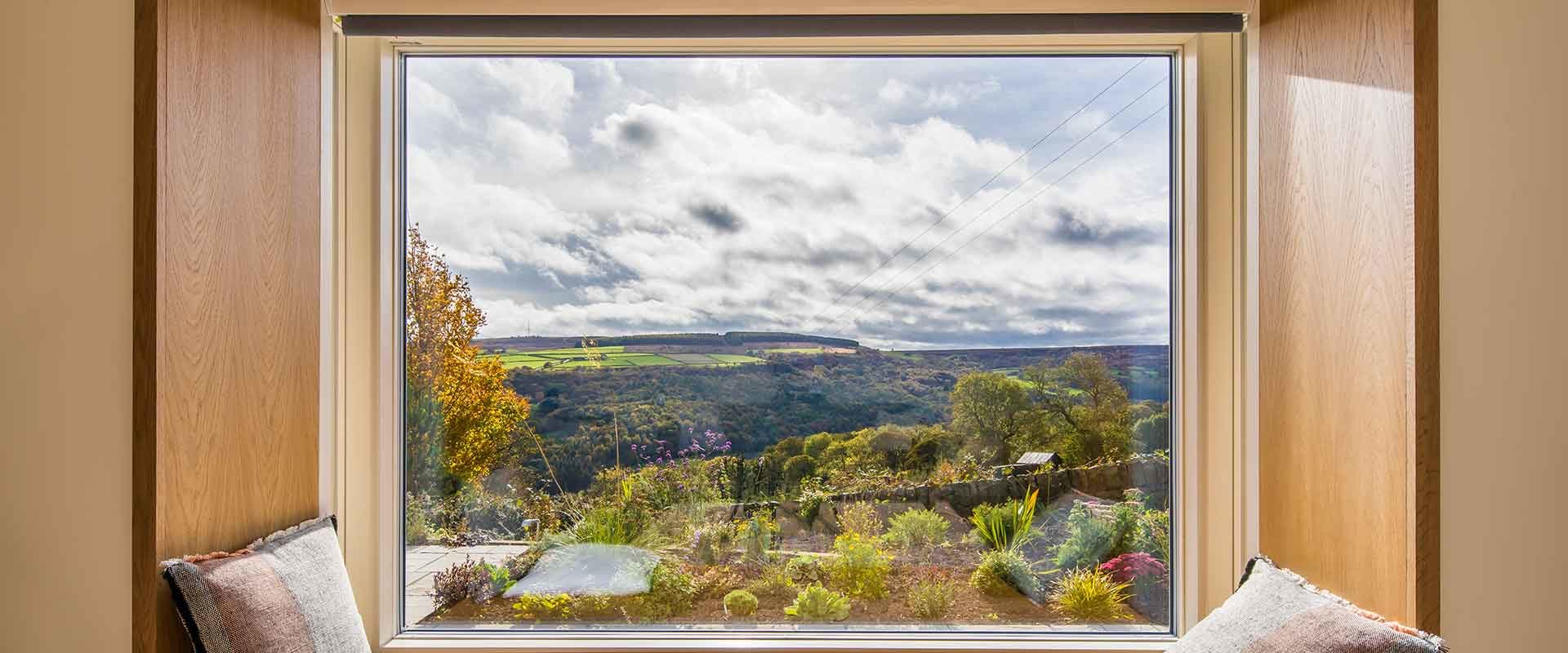I’d like big windows in my new home. What do I need to think about at the planning stage?
VELFAC:
The key to success is positioning. Together with your window supplier and architect, start by assessing potential light levels in every room, and how these vary over the day and year. These factors will determine:
- The ideal location for extra-large windows – probably south, east or west-facing facades.
- Where the windows can increase the flow of natural light, especially in winter, with overheating (or excessive solar gain) mitigated by shading strategies and ventilation.
- Smaller windows installed in north-facing facades can also help retain heat, with the result that your home will enjoy the ideal indoor climate all year round.
PAUL:
Consider comfort which can be an issue with larger glazing. Think about summer shading and about what glazing performance you need to keep you warm in winter. Also, ask if you really need the window to go all the way to ground level; this adds very little benefit in terms of view and daylight but adds to heat loss in winter and gain in summer.
ALAN:
As well as positioning, always ask yourself what the window is for. Is it for a view, or is it for a room that needs lots of light? Design it around that need first.
At Sycamore Hall, we replaced existing, thick-framed uPVC windows with large VELFAC units and also constructed new bay windows, facing the surrounding valley, which feature deep dropped sills, window seats and side lights.
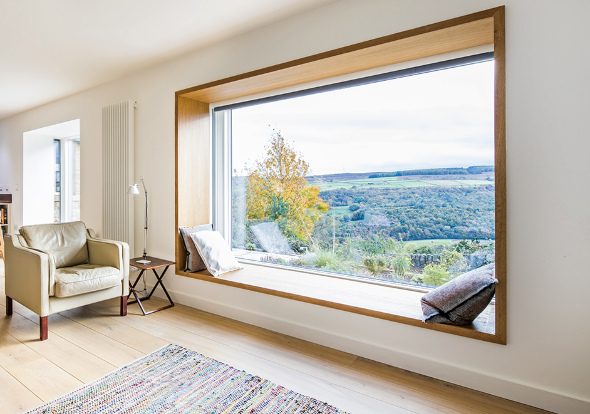
How do I install larger windows?
VELFAC:
Windows can play a crucial role in reducing a building’s heating requirements and energy consumption, but if not correctly installed, they can cause issues and frustration. We always recommend using approved installers for the installation of large windows, as they are specifically trained to overcome any potential problems. However, if you wish to install the windows yourself, make sure you only use approved materials and always seek advice from the window manufacturer first.
Secondly, check that your ideal windows can physically be delivered to your site. If access is tight then standard delivery may be impossible, and you may also need space for specialist installation equipment such as a crane. Above all, talk to your window supplier and architect about potential installation issues as early as possible to avoid any possible delay.
PAUL:
We agree, this is mainly about preparation. The opening needs to be 100% ready to receive the window. You don’t want to be trying to fiddle things with a big heavy window hanging in the balance.
ALAN:
The other biggest issue we’ve encountered on projects is access to steep, sloping sites – particularly common in Sheffield! Triple and even double-glazed windows can be very heavy and awkward to move. Your architect should consider safe installation but you may also need to discuss access with the installer/contractor.
There are many window materials available. What’s the benefit of having windows made from aluminium/wood composite and wood only, or PVCu?
VELFAC:
Timber window frames are undoubtedly attractive, and can deliver a high level of insulation, but will require maintenance and will probably needing repainting every 8-10 years (depending on local weather conditions). By choosing wood/aluminium composite windows, you get all the benefits of the internal timber frame, with the low maintenance of external aluminium.
uPVC is very low maintenance, but has a relatively short expected lifetime. Furthermore, uPVC is not always the most attractive option and frame elements can be relatively thick. Slim-framed composite windows address these issues by combining external slim aluminium (with internal timber, so you can maximise natural light and ensure an up to 60 years operational lifetime for your windows and doors
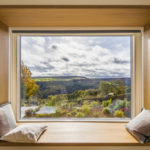
PAUL:
This, for us, comes down to performance, cost and aesthetic preference. Our first choice for the main frame is always timber. It’s a more pleasant and attractive material to have in the house. It has excellent inherent thermal properties and is low on embodied carbon.
If budget is a major concern, then uPVC is an option as it can give a relatively good performance at a much lower cost. It isn’t as low embodied carbon, though, and the best looking profiles can get closer to timber prices.
ALAN:
Externally, we like both timber and aluminium. Advances in timber and paint technology over the last few years mean that timber windows are very low maintenance, but aluminium will need less care in the long run. Higher embodied carbon than timber on its own, composite windows offer a good balance of the benefits of both.
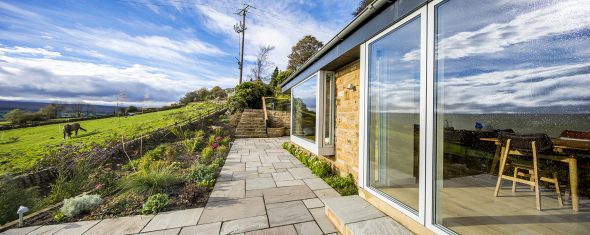
I want to add large doors to add natural light and garden views. What are my options?
VELFAC:
The most popular large glazed door designs are:
Sliding
- One or two sliding glass doors
- If outdoor space is limited, sliding doors are an ideal option
- Can also be combined with fixed glass units to create larger areas of glazing
Bi-fold
- Multiple panes fold back, concertina-style
- Can provide greater operational flexibility as you can open just one pane for ventilation or access
Casement
- Hinged doors, installed either as single or double-leaf
- Can also be combined with fixed glass units to create larger areas of glazing
PAUL:
In terms of performance, casement doors allow frames to overlap and for really good seals for air-tightness. Sliding doors now have mechanisms that compress the seals on closing making for good air-tight performance. Bi-folds struggle with air-tightness most as you’re relying on the butting up of the doors to make the air-tight seal.
For my own retrofit, we chose a double casement door as it gave us a decent sized opening and excellent performance.
ALAN:
Start by asking yourself how big do you want and need your opening to be? If the opening is above 2.4m, you’ll need to look at sliding or bi-fold doors. Below this, a standard casement makes lots of cost sense.
Bifold doors allow almost the whole opening to be opened up for access, but the restrictions on pane size mean you often end up with more frame when the doors are closed. Sliding doors need to stack, so there will always be some of the openings that are not open, but when closed you normally have much more glass.
I’d like big windows, but how can I protect my home from overheating?
VELFAC:
You can minimise the risk of overheating with a range of different strategies, such as:
- Low-energy or tinted glass – VELFAC SUN glass, for example, reflects 60% of the sun’s heat with minimal impact on internal light levels
- Architectural features designed to minimise the impact of high summer sun and maximise low winter sunlight, such as inset windows, or strategic use of shade cast by balconies and eaves
- Proactive and strategic ventilation – such as motorised high level windows which open automatically at a certain temperature
- Brise soleil – physical shading, fitted externally, usually a louvred screen
- Strategic planting schemes, especially using large plants or trees with thick summer foliage and bare winter branches to control light levels across the seasons.
PAUL:
You could also consider external or internal blinds. Window ventilation, whilst useful in normal summer conditions, is less useful in extreme heat as you want to the inside to be cooler than the outside. Keeping cills higher makes a huge difference to how much shading you might need to stop overheating and impacts very little on view or daylight.
This is a big issue that has grown with our desire for larger areas of glazing. It will depend on your window positioning, for example, south-facing glazing is relatively easy to deal with as the sun is high in summer. East and West (especially west) are less easy to deal with as the sun can still be quite hot but is much lower in the sky.
How do I avoid making costly mistakes when purchasing & installing new windows?
VELFAC:
Measuring of window and door sizes – don’t try and do this yourself, especially for bespoke windows. Instead send your architect’s plans to your window supplier who will confirm sizes for you.
Be aware of relevant building regulations – and especially those concerning new build houses and glazed features such as window walls.
Once again, talk to your supplier and architect, as an installation that fails to meet building regulations could require potentially costly remedial work.
Finally, plan installation early. As already mentioned, installation of large windows can present a range of issues, from site access to the need for specialist installation equipment such as extra scaffolding and cranes, all of which must be planned for in advance. If not, your build may be delayed costing you time and money.
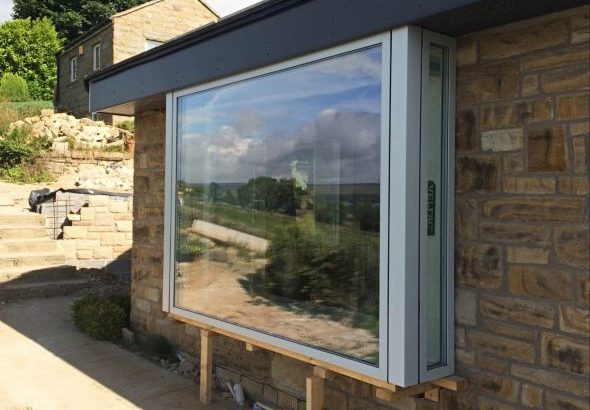
PAUL:
Keep it simple; fewer elements within an opening make for less interrupted views; better performance and lower costs.
ALAN:
Decide early on what your priorities are in terms of view, daylight and performance.
Want to make the most of your homes windows?
We’ve explored how to make the most of the views that surround your home and invite more natural light into your space.
